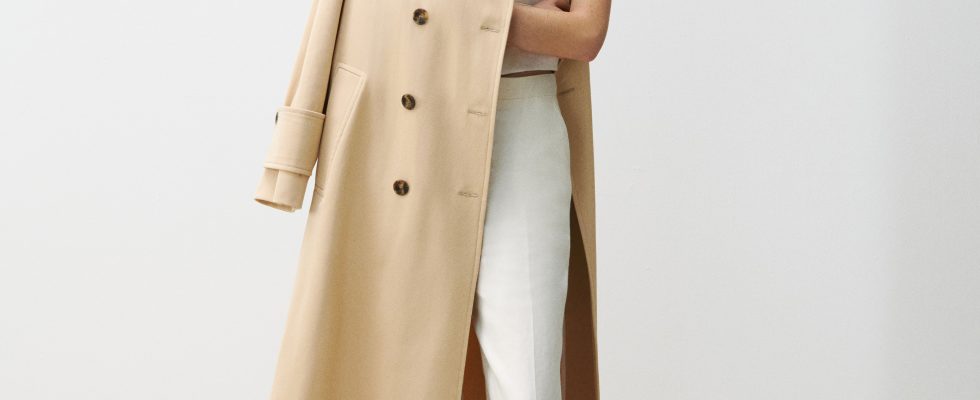Functional, sophisticated and symbolic. Rare are the clothes in a dressing room that combine so many qualities in a single piece. Like the timeless trench coat, a waterproof coat whose wide collar is raised in the rain and squalls, haloed with the superb and natural authority it confers on the wearer. “It has a military origin, so practical and extremely well designed at the base, explains José Lamali, artistic director of the Etudes brand, who recently revisited it for Aigle. Its material is noble and its attributes [NDLR : pattes de serrage aux manches et à la ceinture, boucles, col, revers, bavolet…] allow you to play with the proportions and adjust it according to each person. And then this old binomial of the uniform, assimilated to male power and today mainly worn by women, remains for them synonymous with claim and emancipation.
A military dimension
Descended from a rubber coat of the early 1820s intended for gentlemen fishermen, hunters or riders, this rainwear became more breathable in 1853 thanks to the Mayfair tailor John Emary, and more waterproof by Thomas Burberry, in 1879. It took its military dimension (“trench coat”) during the First World War, coming to the aid of the pioupious who hang their accessories on the rings of the belt and protect themselves (a little) from the mustard gas under its collar. A symbol of panache and patriotism in the civilian population, the trench coat then travels to Hollywood, dressing the figure of the detective, the spy, then resting on the shoulders of men of power (politicians, bosses, executives) before feminize in the 1960s and 1970s under the pencil stroke of Yves Saint Laurent. From then on associated with the free and active woman appropriating an object of patriarchal power, the trench coat accompanied for a time punk, gothic and modern dandy styles.
Little by little, it will be sublimated and revisited by the most famous creators (Martin Margiela, Jean Paul Gaultier) as well as by the young guard. In twenty years, we have seen it transparent, XXL, in leather or set with jewels on the catwalks. Without however unbolting its standard “beige Burberry”, which remains the most seen in the street. Problem: if this version can give the finery of the elegant whimsical Audrey Hepburn in Diamonds on couch (1961) or the combative rebel Meryl Streep in Kramer versus Kramer (1979), it can also produce the undesirable “Inspector Gadget effect” and elicit some taunts. How to get rid of it? Switch to another color (white, black) or even another pattern, such as tartan or houndstooth. “Or assume, by letting these two or three days of possible ridicule pass and then claim this strong choice as an affirmation of one’s identity, recommends José Lamali. Stylistically and socially, wearing a trench coat will always be a commitment.”
